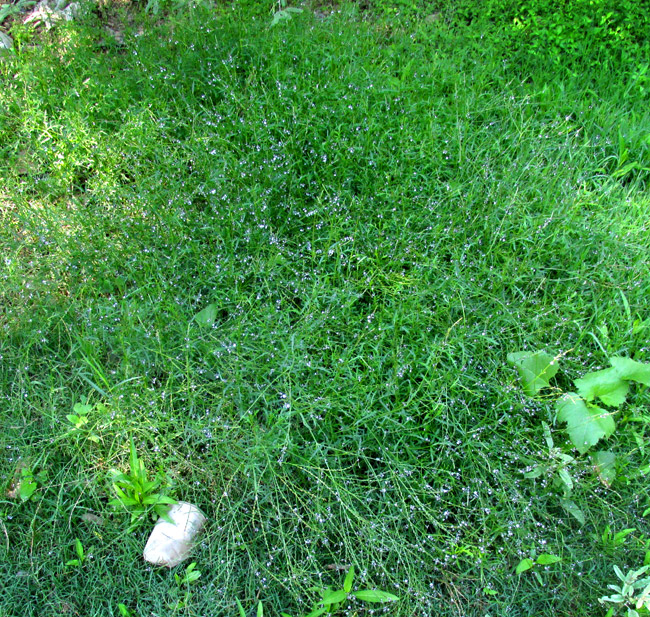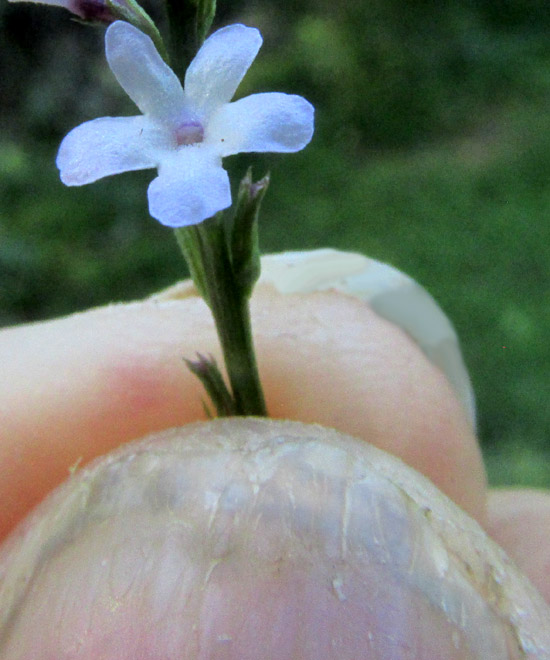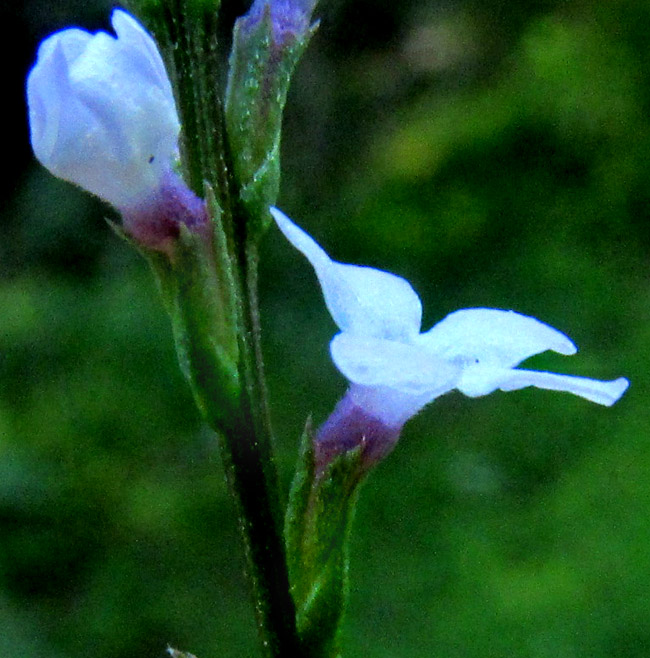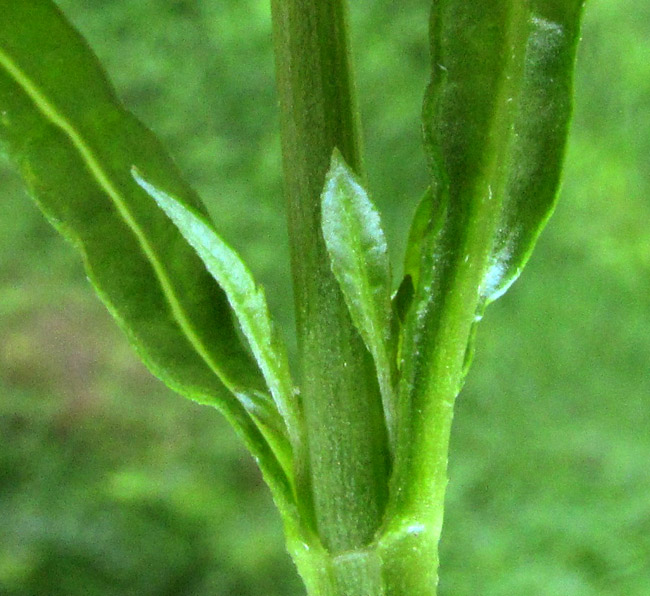Excerpts from Jim Conrad's
Naturalist Newsletter
entry dated May 26, 2023, issued from near Tequisquiapan, elevation about 1,900m (6200 ft), Querétaro state, MÉXICO
(~N20.55°, ~W99.89°)
MINT-LEAVED VERVAIN

On the floor of a shaded, sheltered gully the above bathtub-size colony of diffusely slender-branched herbs was spangled with small, blue flowers. Below, you can see that the blossoms were arranged in spike-type inflorescences at the branches' ends.

As seen above, inflorescences consisted of much-branched stems bearing slender spikes of flowers. Each spike, elongating at its tip, bore numerous flowers, but only one or two blossoms were open at any one time. At the bottoms of the spikes, the flowers' corollas had fallen off and fruits were maturing inside the remaining calyxes. At the tips grew immature flower buds, while flowers opened only between these extreme points. Also in the above picture you can see that the plants' leaves were deeply lobed, the slender lobes set apart from one another.

Such bluish flowers in slender spikes suggest to those knowing their wildflowers and weeds that this is a species of vervain, or verbena, genus Verbena, of the Vervain Family. In the picture my thumbnail receives such prominence because in Verbena identification corolla dimensions are important, and my nail provides scale. The corolla is 6 or 7 mm wide.

Above, typical of vervains, it's seen that the flowers are weakly bilaterally symmetrical. Notice that arising immediately below each green calyx there's a green, sharply pointed scale. Scale length relative to calyx length is important when identifying vervains to species level. This species' scales are somewhat shorter than the calyxes they subtend.

Veins in our plants' deeply lobed leaves were sunken into the blade surfaces.

Stems and leaves were practically hairless, though a few short, white hairs appear scattered here and there, mostly on recently emerged shoots.
About 150 Verbena species are recognized, mostly in the Americas and Asia. Here in the upland central Mexican region known as the Bajío, about seven species are documented. In this area, if you have a Verbena with deeply lobed leaves, the corollas are wider than 3mm across, and scales beneath the flowers are shorter than the calyxes, you have VERBENA MENTHIFOLIA, the menthifolia providing the English name of Mint-leaved Vervain.
Verbena menthifolia is native from the drier upland parts of the US Southwest south through Mexico's uplands to Oaxaca in the south. Our plants differ from most Verbena menthifolia pictures on the Internet in that ours are less hairy than others. However, the Flora del Bajío tells us that some collections of the species made in Guanajuato and here in Querétaro are distinguished by having very sparse hairiness on their stems. The lack of hairs on our plants might be an expression of regional variation, plus our plants being in a shaded environment may have been an influence.
In traditional medicine verbenas in general often are used as general tonics. In the 2017 work by María López-Villafranco and others entitiled "Las Verbenaceae empleadas como recurso herbolario en México: Una revisión etnobotánica-médica," we find that in Mexico Mint-leaved Vervain has been used specifically against hair loss, tiredness and aching joints.